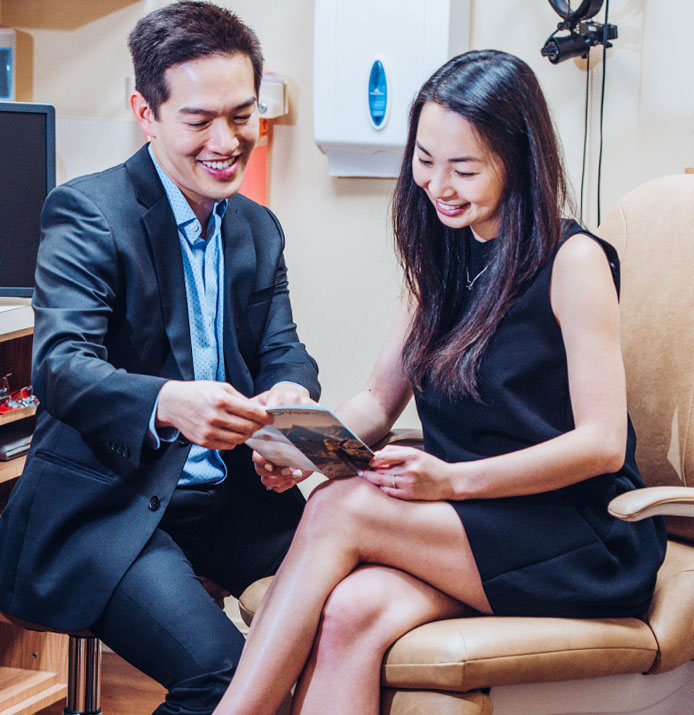Upper Blepharoplasty
What is an Upper Blepharoplasty?
Upper blepharoplasty (eyelid surgery) refreshes the appearance of the upper eyelids by removing extra skin and fat that develop with aging. It removes baggy skin, wrinkles, and bulges on the upper eyelids giving the eyes a bright and youthful appearance. It is one of the most commonly performed cosmetic surgeries with a high satisfaction rate.
Table of Contents
Toggle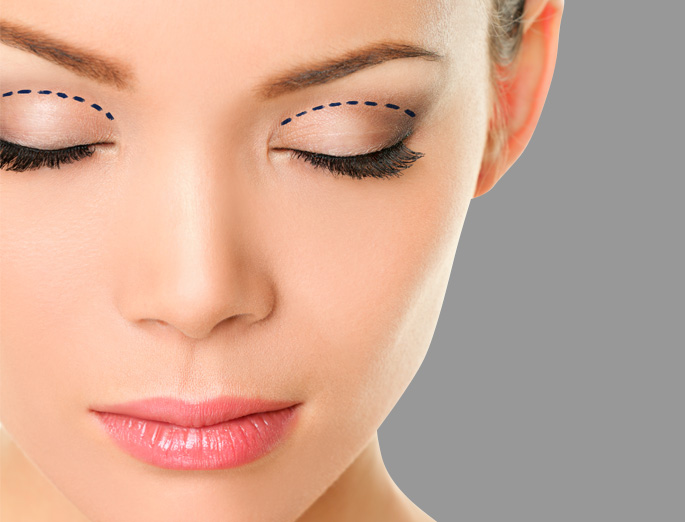
How does the procedure work?
The surgery is done in a surgery center with IV sedation or in the office with local anesthesia. Dr. Lee makes artistic markings so that just the right amount of skin will be removed. The scar will hide within the natural crease of the eyelid so that it is essentially invisible. Dr. Lee will often remove fat (and sometimes even reposition or add fat) in the upper eyelid to create the most youthful contour for your eyelids. Patients go home the same day and are able to have their eyes open immediately after surgery.
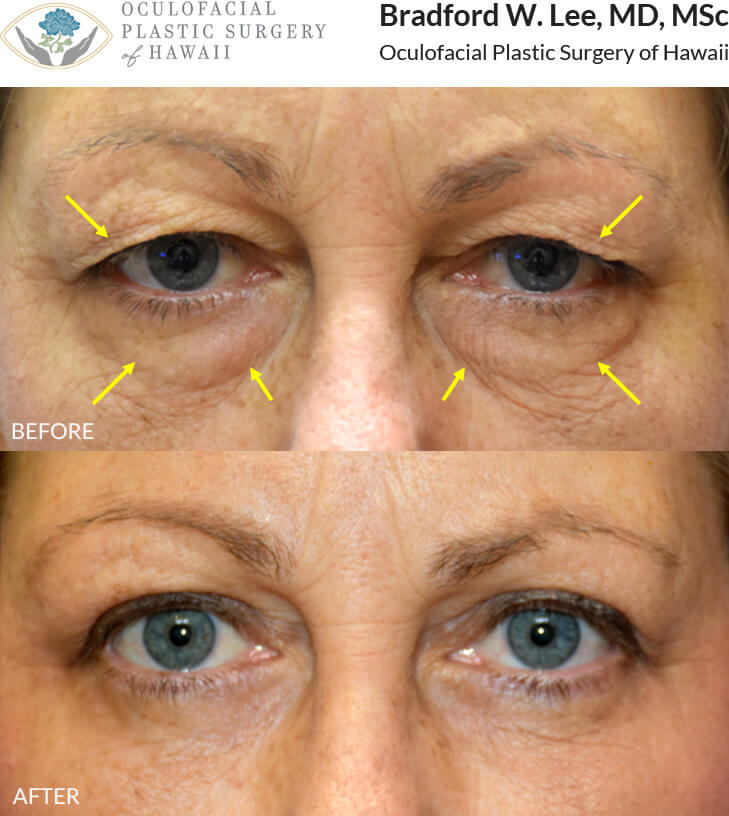
This 51-year-old lady complained of excess skin on the upper lids that was resting on the lashes and covering the area where she used to be able to apply eye shadow. She was also bothered by the puffiness, tear trough hollowing, and skin textural changes on the lower lids. She underwent a bilateral upper and lower blepharoplasty for a dramatic yet natural-appearing enhancement of the upper and lower eyelids.
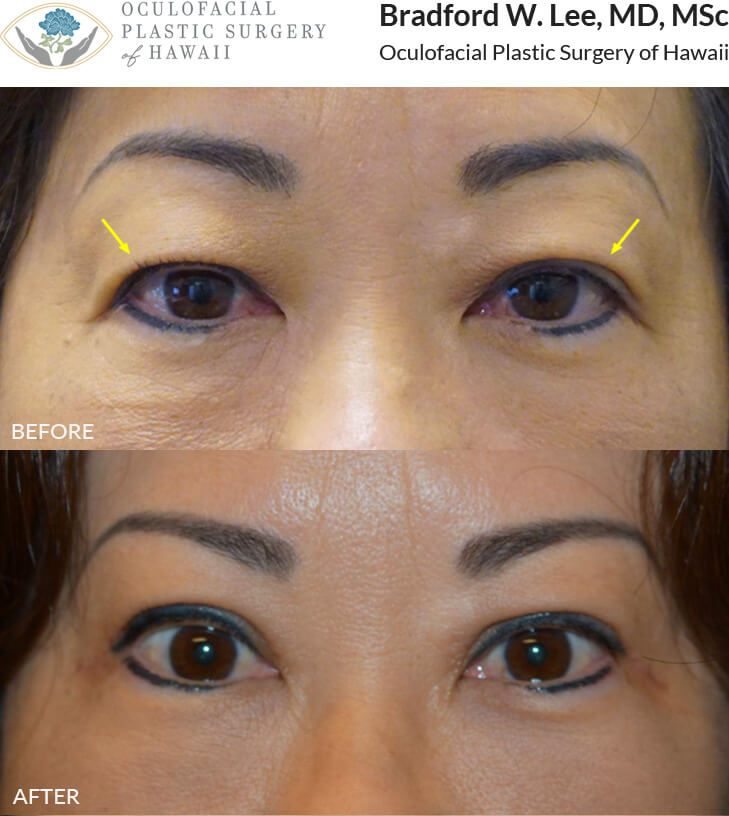
This 56-year-old patient complained of reduced peripheral vision due to her droopy upper eyelids. She underwent an upper lid blepharoplasty to improve her vision and achieve a rejuvenated and brighter look.
How does Dr. Lee customize an Upper Blepharoplasty?
Much of the success of this surgery is in the customized marking of incisions and what skin will be removed. Dr. Lee takes careful measurements to
remove the optimal amount of skin, fat, and muscle during the surgery. If this is not done correctly, it can result in an unnatural eyelid crease, visible scars, residual skin or fat, hollow upper eyelids, difficulty closing the eyes, dry eyes, or even vision loss.
Other procedures can be combined with blepharoplasty when having an “eyelid lift.” Some patients need a ptosis repair (to open the eyes) or a brow lift (to elevate the brows). Some patients would ideally have all 3 procedures performed together for the best visual and cosmetic improvement. However, other patients only need a single procedure to have the best outcome for their upper “eyelid lift.”
Some patients want to refresh the appearance of their lower eyelids at the same time and choose to have a lower blepharoplasty. This procedure removes excess skin and fat on the lower eyelids, smooths the transition between the eyelid and cheek, and reduces the wrinkles, “bags” and “dark circles” under the eyes that can make people look tired.
How is blepharoplasty customized for Asian patients?
Asian eyelids have a different anatomy than Caucasian eyelids and require a surgeon with a careful understanding of how to perform surgery on Asian eyelids. About half of patients from China, Japan, and Korea have no eyelid crease. Some of these patients prefer not to have an eyelid crease after surgery. However, many desire to create a crease (or “double eyelid”) to make the eyes appear larger. There are special techniques used to make the crease look natural and to prevent the crease from fading over time. Other Asian patients may have multiple eyelid creases or asymmetry in their creases between their left and right sides. This can also be corrected with surgery. Dr. Lee has a particular interest in Asian eyelid surgery being Asian himself and coming from Hawaii. He has taught surgical courses on Asian blepharoplasty, given lectures across Asia, written book chapters, and learned from renowned experts in Asian eyelid surgery in Southern California, Korea, Japan, and Brazil.

Testimonials




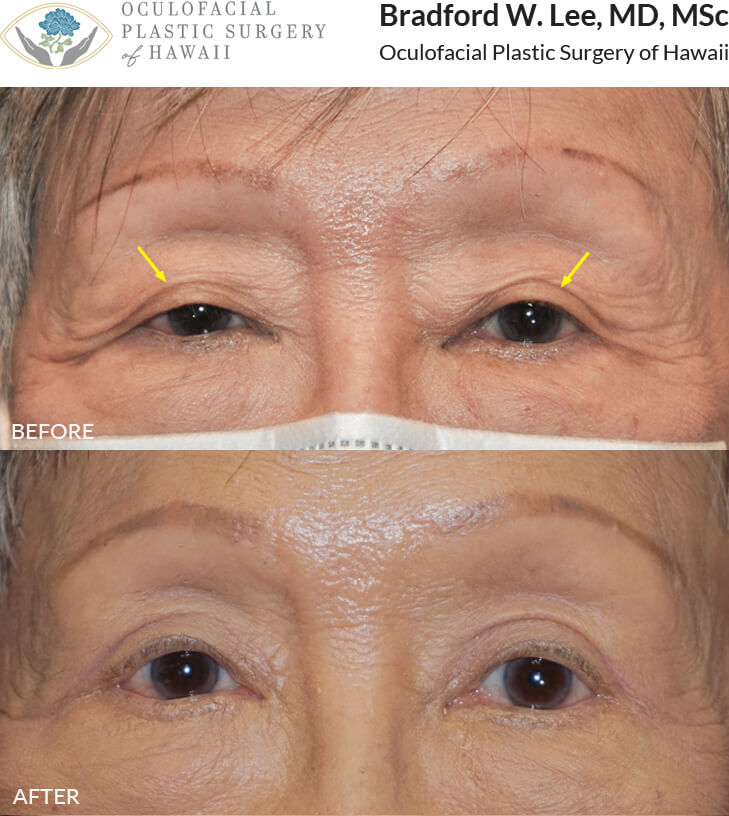
This 80+ year-old Asian lady was bothered by excess skin on the upper lids and lateral hooding of skin. The patient underwent an upper blepharoplasty to remove excess skin, define the eyelid creases, and simultaneously open her eyes.
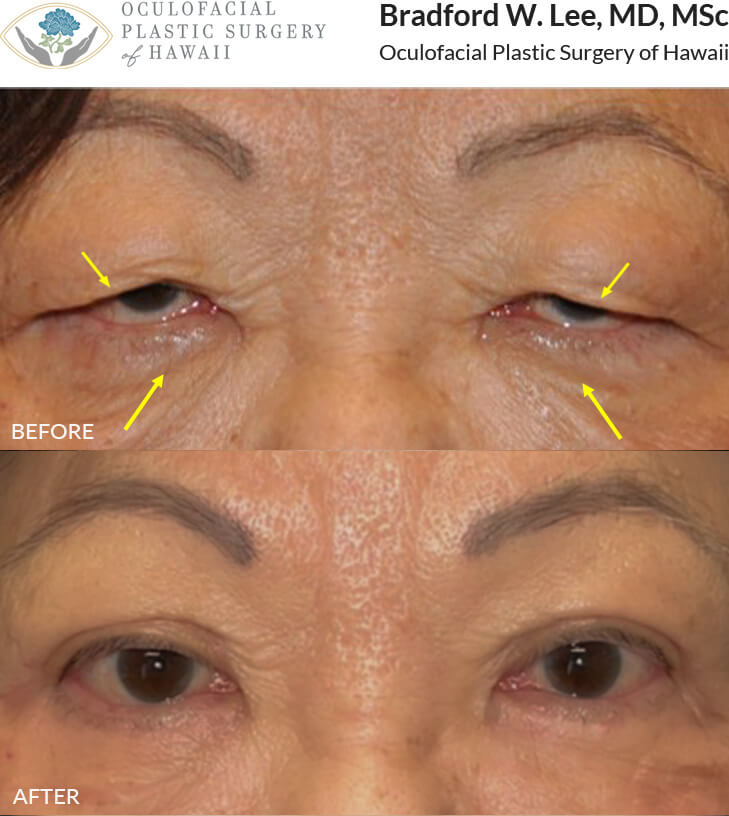
This 74-year-old lady presented with severe upper lid ptosis and excess skin of the upper and lower eyelids. She underwent a bilateral upper blepharoplasty with ptosis repair and bilateral lower blepharoplasty resulting in a dramatic yet natural-appearing enhancement of the upper and lower eyelids.
Why do patients prefer an oculofacial plastic surgeon for Upper Blepharoplasty?
Asian eyelids have a different anatomy than Caucasian eyelids and require a surgeon with a careful understanding of how to perform surgery on Asian eyelids. About half of patients from China, Japan, and Korea have no eyelid crease. Some of these patients prefer not to have an eyelid crease after surgery. However, many desire to create a crease (or “double eyelid”) to make the eyes appear larger. There are special techniques used to make the crease look natural and to prevent the crease from fading over time.
Other Asian patients may have multiple eyelid creases or asymmetry in their creases between their left and right sides. This can also be corrected with surgery.
Dr. Lee has a particular interest in Asian eyelid surgery being Asian himself and coming from Hawaii. He has taught surgical courses on Asian blepharoplasty, given lectures across Asia, written book chapters, and learned from renowned experts in Asian eyelid surgery in Southern California, Korea, Japan, and Brazil.
Does insurance cover Upper Blepharoplasty?
Insurances will sometimes cover upper blepharoplasty surgery on visual grounds in severe cases. Typically, the excess skin must be resting on the eyelashes, blocking peripheral vision, and causing difficulty with everyday activities. Photos, visual field testing, clinical notes are reviewed by insurance companies to determine if patients meet insurance criteria for coverage.
What is the “down time” after Upper Blepharoplasty?
While speed of recovery depends on numerous factors including age, blood thinners, and overall health, Dr. Lee recommends planning for bruising and swelling for at least a couple weeks. Most patients look good by 1 month after surgery when most of the swelling is gone. The “final result” is at 3 months after surgery but can sometimes be even longer in Asian patients.
Patients apply ice to the eyelids for the first 2-3 days after surgery to reduce the swelling. There is minimal pain after surgery, and most patients simply use ice and Tylenol for any discomfort. Vision may be slightly blurry for a few days due to eyelid swelling and the antibiotic ointment. Patients can walk the same day of surgery and do light activities, including using the computer or watching TV. They should avoid heavy lifting, straining, or bending for the first 2 weeks. Antibiotic ointment is applied to the incisions for the first two weeks. The sutures either dissolve on their own or are removed 10 days after eyelid surgery.

